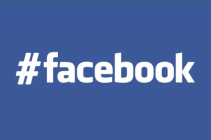It was only a matter of time…
Social media’s influence on hospitality has been growing ever since hotels first started getting their own Facebook pages. Last year, the Sol Wav hotel took a big step forward in this area by becoming the first “Twitter Hotel,” using the popular service as an integral part of guest services. Now, social media integration in the hotel world has reached another new peak, an entire property has been designed by its Facebook fans!
The Val Thorens Sensations, by Club Med, in the French Alps was designed based on opinions pulled from social media. Major hotel features like a lobby climbing wall, main dining room yurt, and outdoor jacuzzi were decided by the hotel’s fans on Facebook before it opened. Even smaller decisions such as bed size and mirror locations in the rooms were made through the social network.
The property doesn’t look half bad either. The Facebook generated opinions were a little quirky, but the end result is impressive. Besides the more original features, like the previously mentioned yurt, Sensations also features some practical accommodations, like beer taps on each floor.
Why more brands should follow Club Med’s example
Though, Val Thorens Sensations is making waves due to the novelty of its design process, the idea of “crowd-sourcing” is something that has real value for future developments in the hospitality world.
Notoriety – being a “designed by Facebook” hotel comes with guaranteed media attention, at least while it’s still a new thing.
Brand Loyalty – This type of guest interaction not only makes a brand seem forward thinking and progressive, it adds an element of authenticity that’s tough to replicate. Giving guests the power to add real input to a property’s layout gets them more emotionally invested in it. Even guests who didn’t directly participate will appreciate the “guest-first” mentality of the idea.
Social media boost – “Follow us on Facebook and help design the look of our new resort” is a pretty compelling pitch.
More guest-oriented attitude and culture – In general, this type of guest-first approach is a nice refresher that any brand can use. When your resort was designed on the opinions of guests, an attitude of high quality service will be inevitable.
But it’s not all good
Even though the idea of “design by Facebook” has its benefits, there are definitely some drawbacks as well.
Idea vs. Reality
Guests don’t always know what they want. Sure, the rock wall in the lobby and outdoor jacuzzi sound like great ideas in theory, but until they’ve been tried it’s hard to tell if they will be good for guests in real life. Maybe the rock wall will be annoying or loud to other guests nearby, maybe it’s just too cold to get in and out of the jacuzzi in the alp winter?
Gimmicky
Having your hotel layout determined by a social media campaign could definitely be a turnoff for the guests of some higher end luxury properties. It’s easy to imagine that certain brands might worry about cheapening their image by being associated with Facebook, or viewed as a gimmick.
My hotel isn’t due for a major renovation any time soon. Why should I care?
Even established properties can benefit from Club Med’s model. The basic idea behind crowd-sourcing can be used in existing properties, with a little creativity! There’s no reason to think it’s an all-or-nothing proposition.
Some examples of how you can use social media opinions to add value to your property:
What color should our new lobby carpet be? You can launch a campaign showing two options of carpet and ask fans to make their voices heard.
What brand / type of wine should we keep in the bar? Wine enthusiasts will be all over this. There are so many choices in variety, vintage and brand, why not just hand this decision over to your fans?
How should we stock the mini-bar? What types of amenities do you want in your bathroom? Even simpler questions can have a big impact.
The idea of a Facebook designed hotel sounds outrageous at first, but when you think about it, it’s really just an extension of great service towards guests.
What do you think about crowd-sourcing in hospitality? Give us your feedback in our comments section below!









